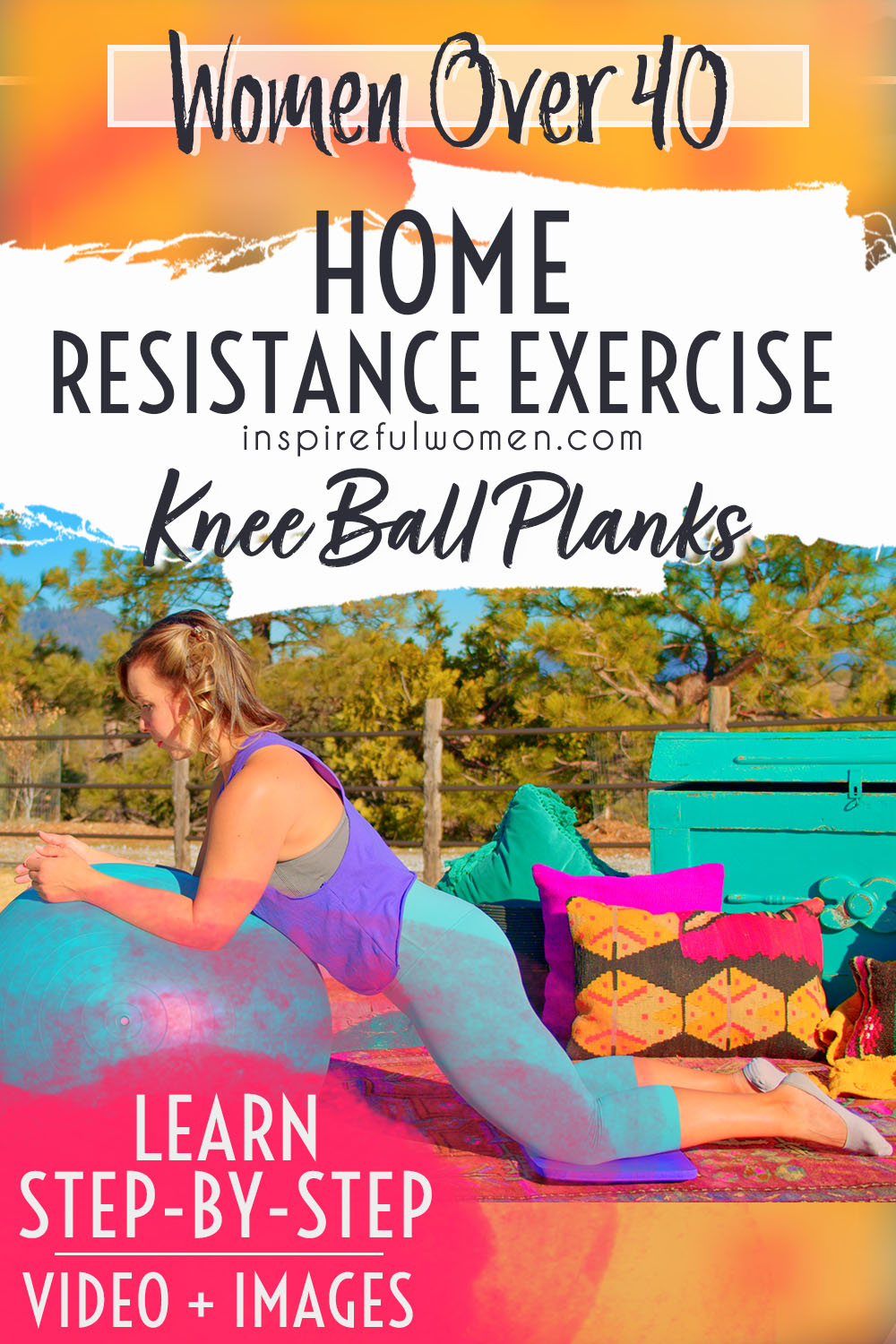BEGINNER MODIFIED PLANK - BALL + kNEES
How to Do the Stability Ball Forearm Knee Plank - Ab Exercise | In-Depth Guide [VISUAL LEARNERS] Beginner
Proper Form & Common Mistakes | Home Resistance Training
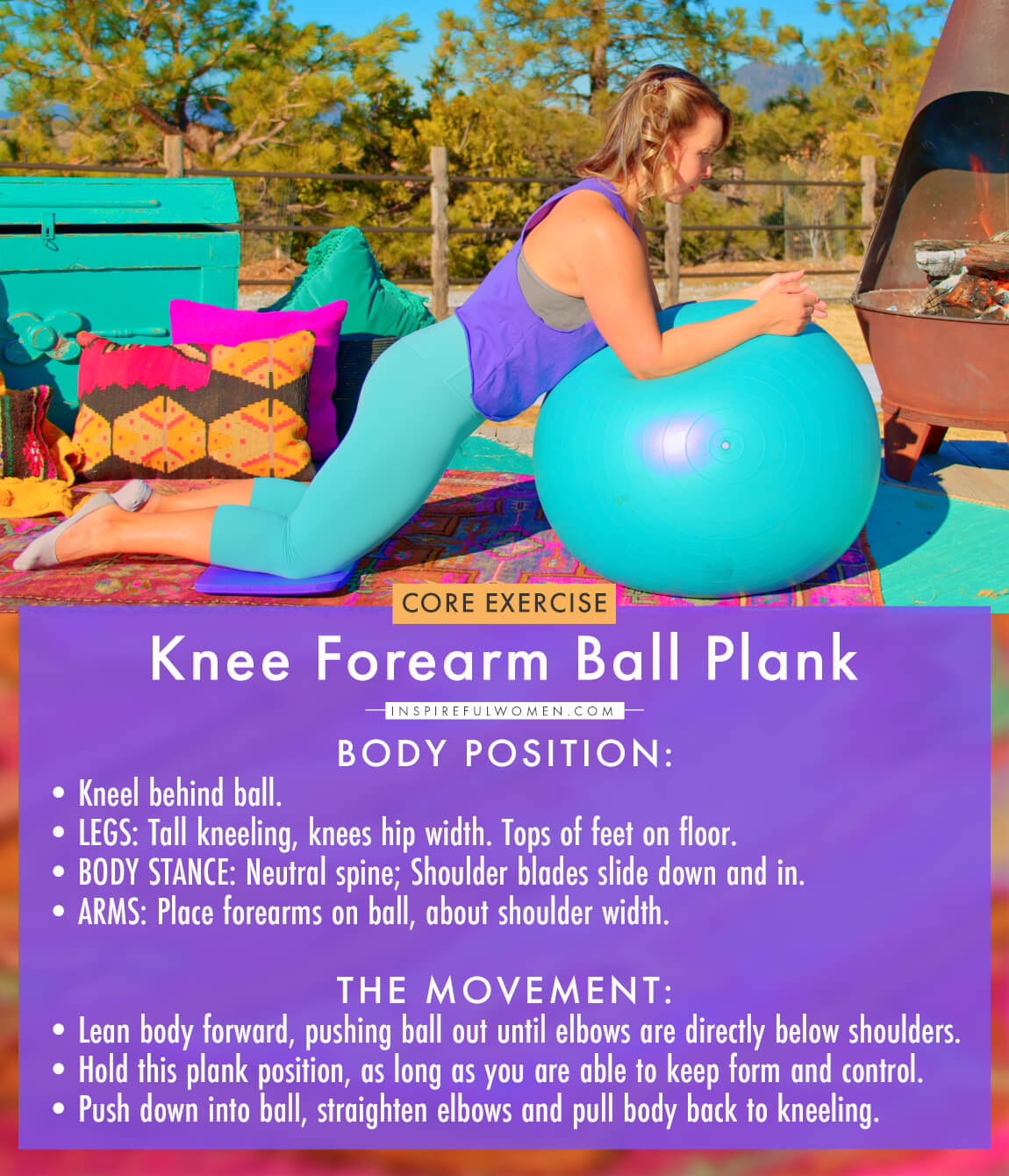
WHAT DO YOU WANT TO SEE?
QUICK DEMO
QUICK DEMO
MUSCLES THIS WORKS
MUSCLES
MAIN MUSCLES WORKED IN the Stability Ball Forearm Knee Plank
LOTS OF CORE MUSCLES - SEE BELOW
transverse abdominis, rectus abdominis, obliques, quadratus lumborum, pelvic floor, erector spinae, multifidi, gluteals
OTHER MUSCLES WORKED:
- Latissimus Dorsi
- Mid and Lower Traps
- Rhomboids
- Pectorals
- Serratus Anterior
- Deltoids
- Biceps
- Triceps
- Forearm Muscles
STARTING POINTERS
Starting Pointers
WHAT WE'RE DOING TODAY
Other names for this exercise: Incline forearm plank
ALL WE'RE DOING:
We're going to do a knee plank, but with our forearms on the swiss ball.
Planks - the full versions- are super duper hard. They involve holding one of the most difficult position you can put your body into. But there are lots of a number of types of planks exercises that we can use. This is the best modified plank option for beginners that won't make you shake like a leaf. Being on our knees AND having our arms resting on a yoga ball will angle us up a bit making the position easier to hold. We really need plank variations in order to work towards doing a full on plank! Very few of us came out of the womb as a fitness instructor.
Stability ball forearm knee planks (where you are right now) are the easiest version of this core exercise. From a kneeling position, the forearms are placed on the ball and the body leans forward in a plank position. The core muscles have to work to hold the body in a nice straight line from the shoulders to the knees. This version of the standard plank exercise is used for stability training of the core. The plank is done with the forearms in contact with the ball to make it more stable than just having your hands on the ball. This is a good introduction level ball plank, for those just getting used to working on a stability ball, or new to core exercises, and those with core or shoulder/arm/wrist weakness or pain.
Once you have mastered this exercise it is easy to progress to more challenging versions. A natural progression is a forearm plank with straight legs.
HOW TO DO THE EXERCISE
LOOKS
HOW Stability Ball Forearm Knee PlankS SHAPE OUR BODY
Nice, confident, upright posture. Controlled, graceful movement. Flatter stomach, toned midsection.
PROPER FORM
PROPER FORM: Stability Ball Forearm Knee Planks
EQUIPMENT, SETS & REPS
EQUIPMENT
Stability Ball
SUGGESTED STARTING WEIGHT FOR WOMEN:
None
SETS & REPS:
3 sets to fatigue - fatigue is when you are no longer able to hold the position with good form.
PACE:
Hold the position very still with good form.
BODY POSITION
BODY POSITION FOR THE Swiss Ball Forearm Knee Plank
Kneeling on the floor with the ball in front of you.
LEGS: Tall kneeling, knees at a comfortable distance apart - hip width or slightly more narrow. You can kneel on a pad if it is more comfortable; if your knees do not tolerate direct pressure on your kneecaps then put your shins on the pad but position your kneecaps over the front edge of the pad so there is no direct pressure on them. Tops of your feet resting on the floor (toes pointed back)
BODY STANCE: Neutral spine (includes neck). You should be able to draw a straight line down the side of your body through your earlobe, top of your shoulder, down the side of your torso, through your hip (the side of your hip and leg), and to your knees. Open your chest, shoulder blades down and in, and keep the space between your earlobe and the top of your shoulder.
ARMS: Place your forearms on the top of the ball about shoulder width apart.
HOW TO DO
HOW TO DO Stability Ball Forearm Knee PlankS
CUE: Keep the front of your hips flat - no hip crease and pivot from your hips.
Lean forward, rolling the ball forward until your elbows are directly below your shoulders (90 degrees of shoulder and elbow flexion).
Your body will lean into a forearm plank position.
Hold a good forearm plank position - without sagging or bending your hips or pulling your shoulders up to your ears, as long as you are able.
Push down into the ball, straightening your elbows and pulling your arms down moving your body back to a kneeling position.
Repeat 3 times.
HOW TO SAFELY GET OUT OF THE EXERCISE
Remove your hands from the ball and step up to standing.
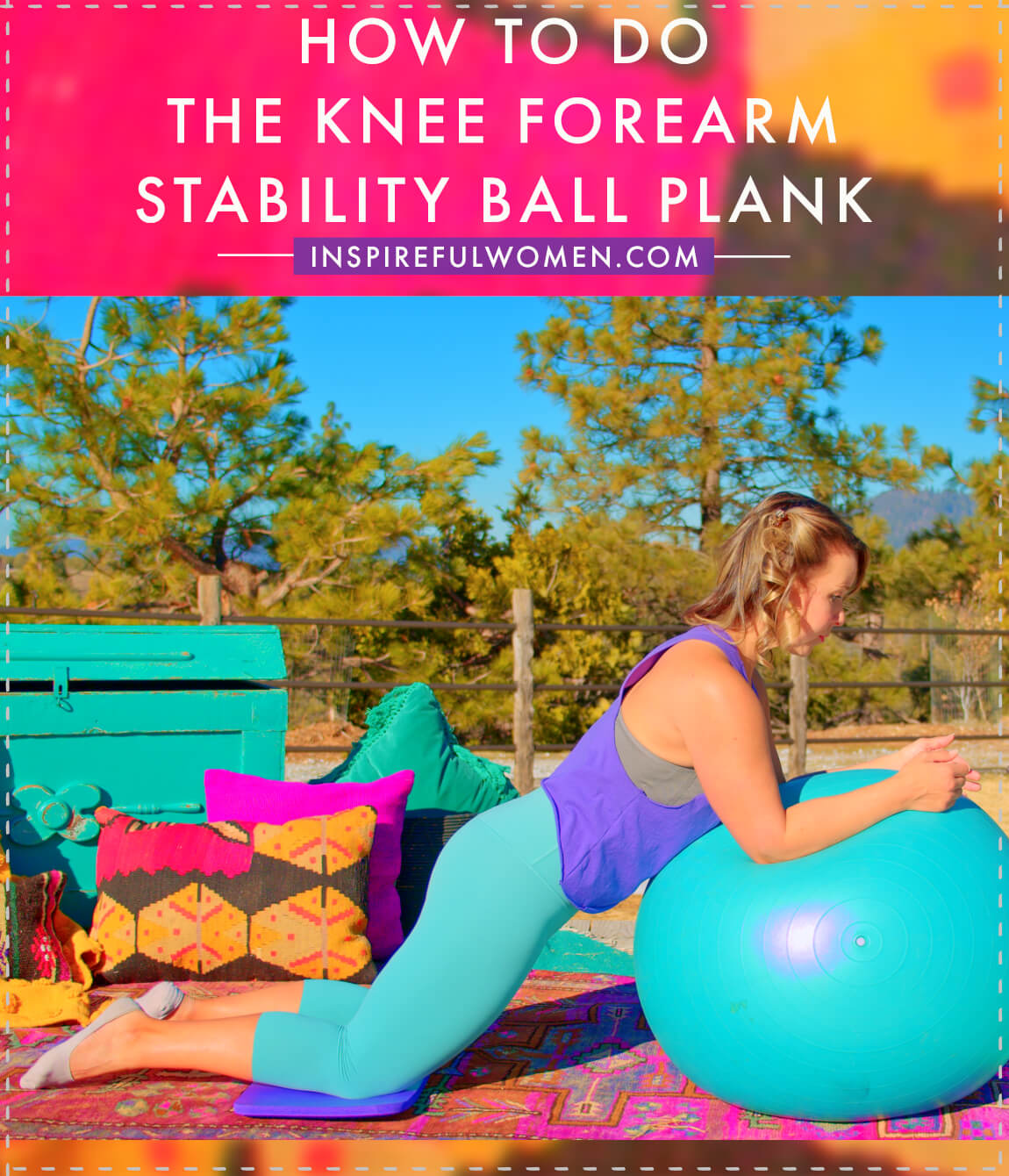
COMMON MISTAKES
COMMON MISTAKES
WHAT TO AVOID WITH THE Ball Forearm Knee Plank
KEY TIP:
Guess what? Good news! Many avoids are the same for most movements. Once you learn the basics, there's really only a few extra avoids for each individual movement.
1. Avoid Midsection Sag/Low Back Extension
AVOID: Avoid letting your midsection/low back sag.
WHY NOT?
- Too much extension in the low back can strain the muscles and ligaments of the spine.
- The back can sag if you collapse in the shoulders or upper back.
WHAT TO DO:
- Maintain a neutral and stable spine.
- Activate the abdominal muscles - the rectus abdominis will work to prevent spinal extension.
- Push down into the ball with your hands/forearms, pull your shoulder blades in and down the back, and lift the sternum.
- Try engaging the pelvic floor.
- Even lengthening the neck can help to control a sagging low back because it helps to activate the back extensors (they run the length of the spine from the cervical to the lumbar region).
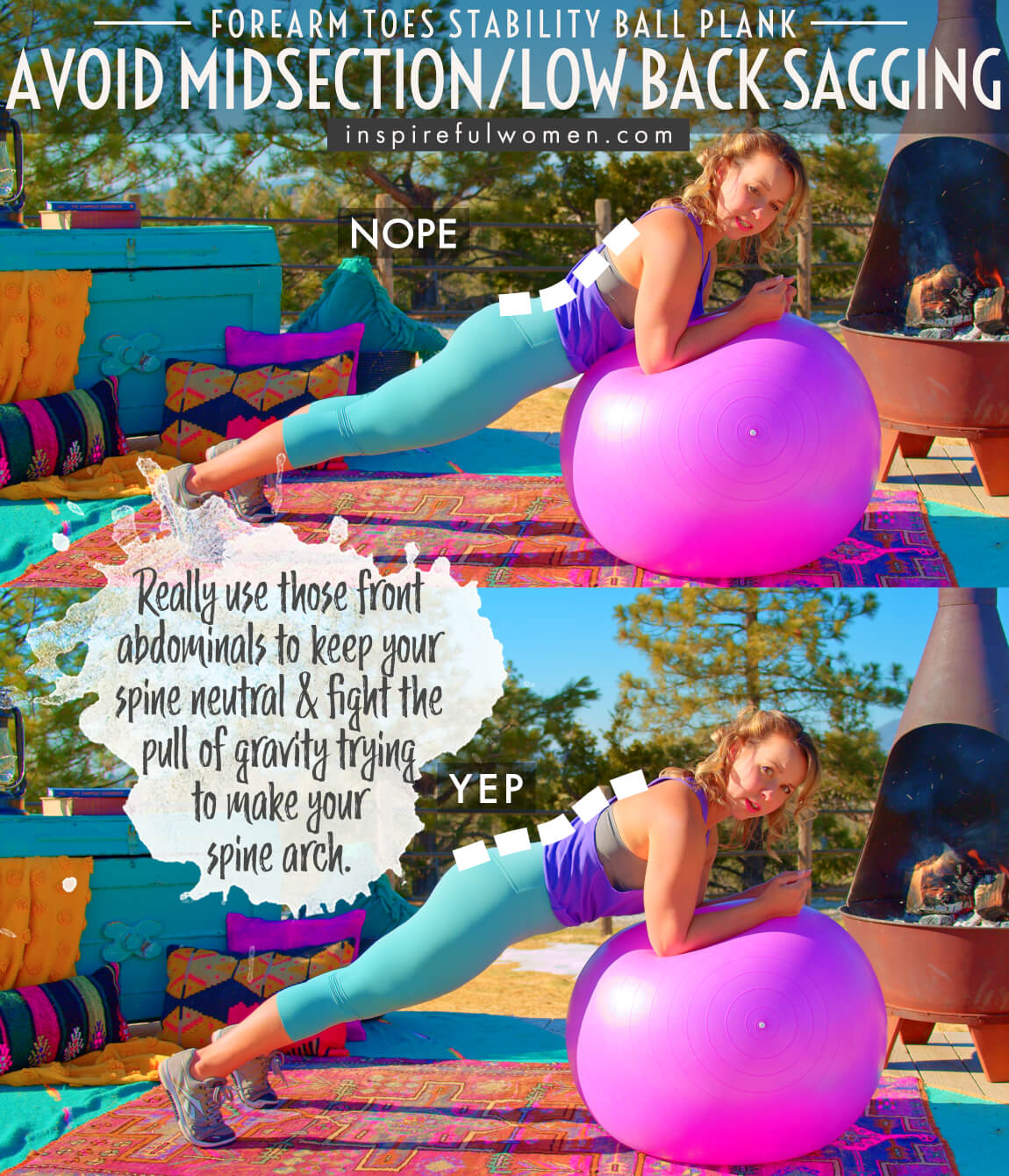
2. Avoid Rounding Back/Spinal Flexion
AVOID: Avoid rounding the back.
WHY NOT?
- Too much flexion in the spine can lead to irritation or compression of the spinal joints and discs.
WHAT TO DO:
- Lift the sternum, push your upper body up and lower your pelvis (hip in line with shoulder and knee).
- Lengthen the spine - from head to tail.
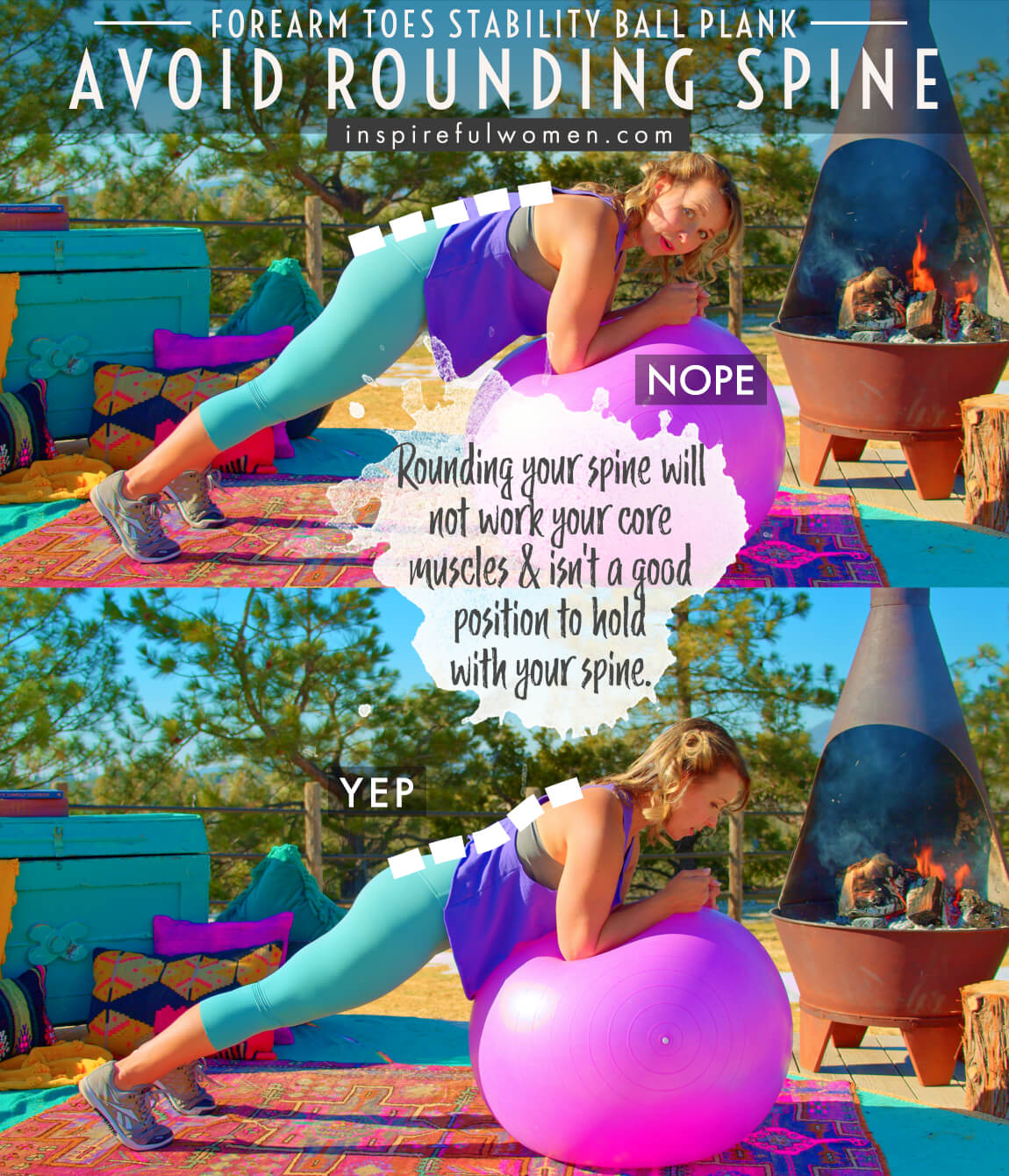
3. Avoid Hiking Hips In Air/Hip Flexion
AVOID: Avoid bending/lifting/hinging your hips.
WHY NOT?
- Lifting the hips up is a common cheat that decreases the muscle activation of the core and the hips.
- Lifting the hips results in an angle or v shape - the hip joint is higher than the shoulder and the knee.
- This will decrease the effectiveness of the exercise.
WHAT TO DO:
- It is important to avoid holding the hips in a flexed position; it activates the hip flexors.
- The goal is to make your body a straight line - earlobe, shoulder, hip, knee, ankle.
- Lower your pelvis down and activate your core muscles and gluteus maximus more.
- Keep the front of the hip flat - no crease.
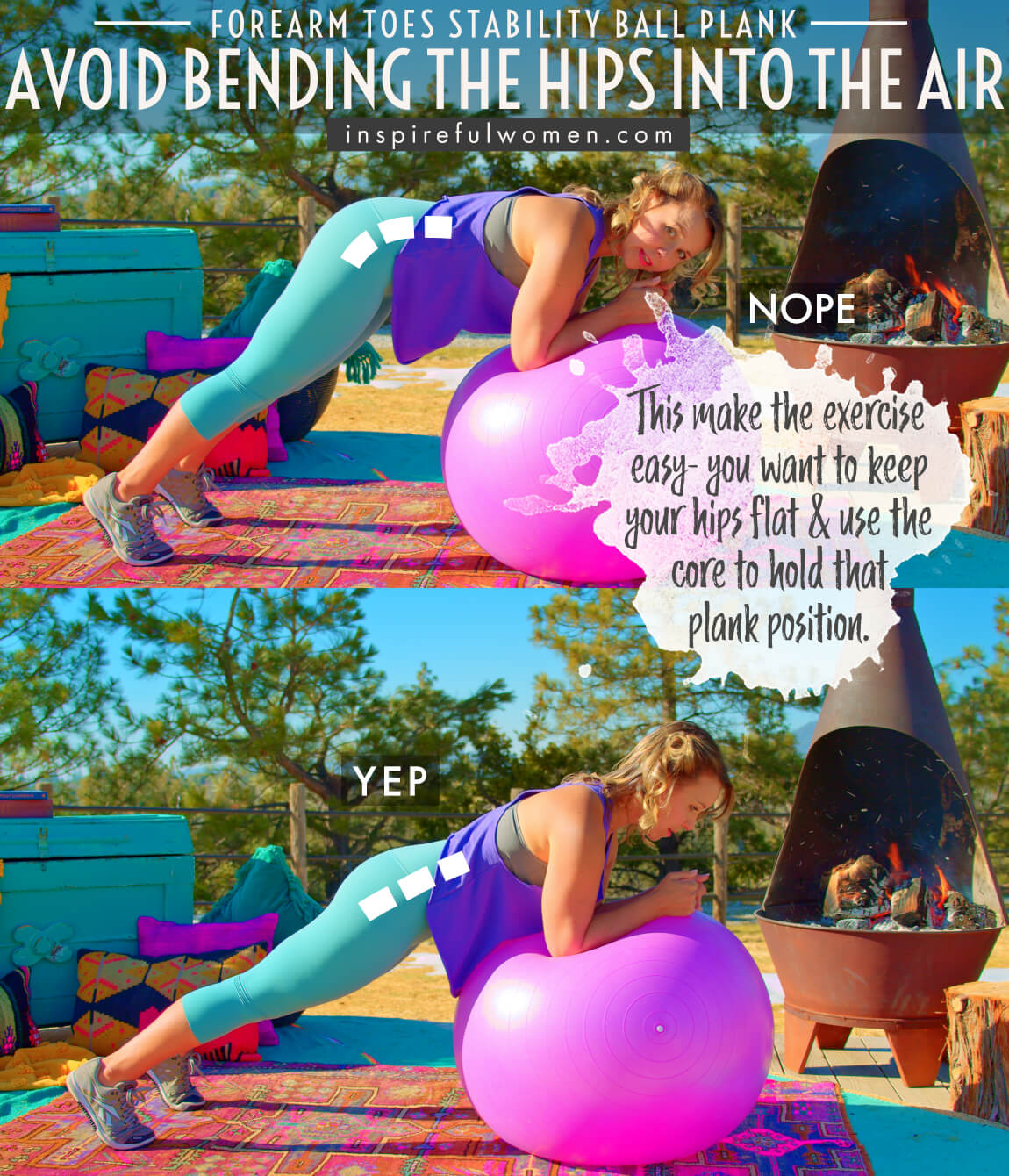
4. Avoid Lifting/Tucking Chin
AVOID: Avoid lifting the chin.
WHY NOT:
- This can lead to neck strain and damage to the soft tissue and small joints of the cervical spine (neck).
WHAT TO DO:
- Keeping your neck (cervical spine) in neutral will strengthen the muscle of the neck in a neutral position - the healthiest position for the joints and nerves (part of a neutral spine position).
- Keep your neck long and look down at the floor.
- Keep space between your earlobe and the top of your shoulder.
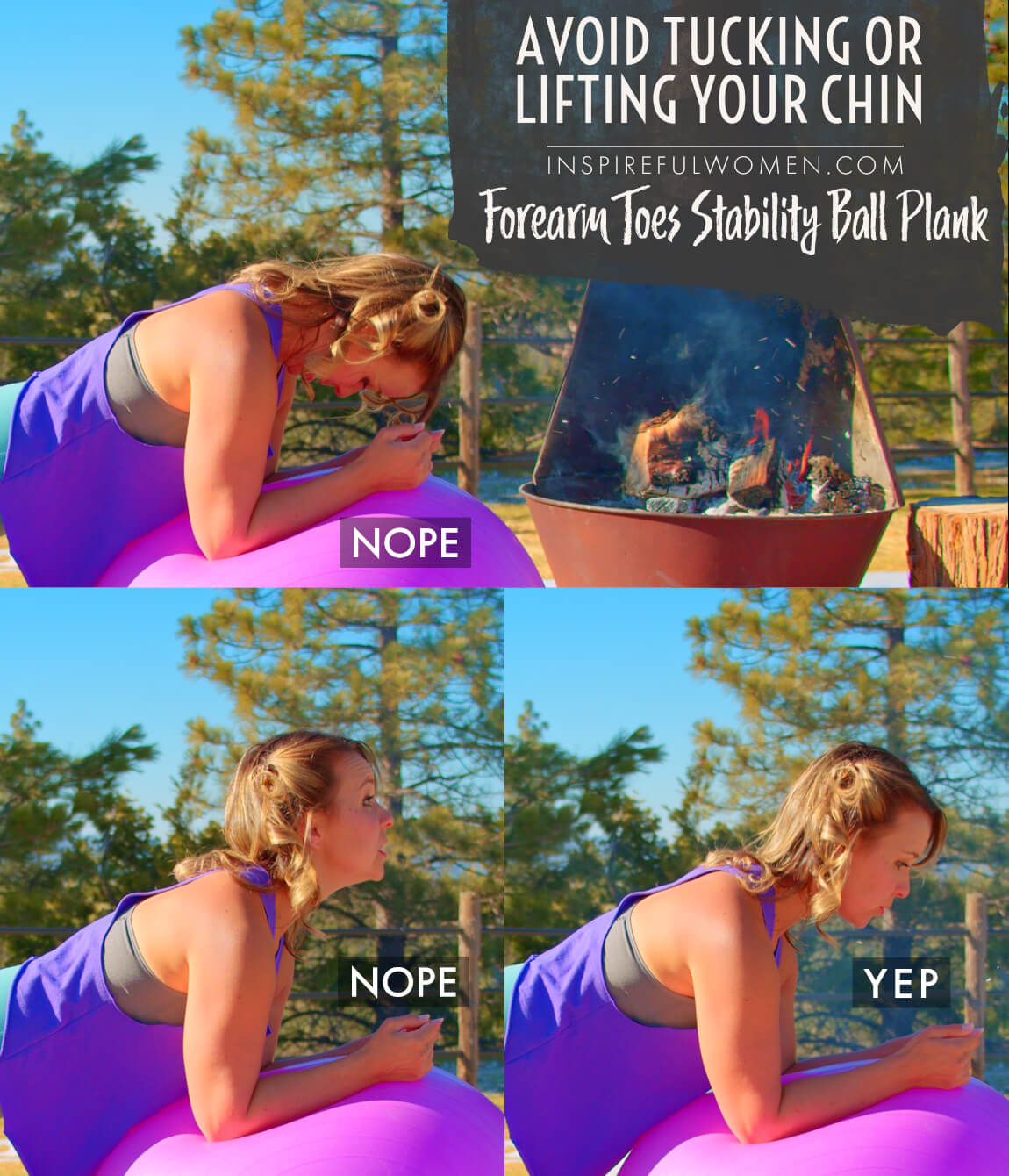
5. Avoid Dropping Into Shoulder Joint
AVOID: Avoid dropping into the shoulder.
WHY NOT?
- Stresses the shoulder joints, and increases the lumbar curve.
WHAT TO DO:
- Keep the shoulders back and sternum lifted.
- Press down into the floor with the support hand.
- Lengthen the spine (including the neck) and energize the arm that is reaching out.
- This will activate the muscles of the core.

WHAT WE'RE DOING TODAY
WHAT & WHY
BENEFITS OF TRAINING THE Core MUSCLE
WHAT
This movement will be easier & harder in some ways than a standard plank without a ball.
Stability ball arm planks are done with the upper body balancing on the stability ball. These exercises are similar to a standard plank but require you to stabilize the upper body on an unstable surface (this is what makes it harder). The muscles of the arms need to work to hold the wrists, elbows, and shoulders steady and balanced on the ball.
Our torso will be at an increased angle compared to our forearms being on the ground, which will mean it's a bit easier for the core muscles, as we are working just a bit less against gravity. Put yourself on your knees and you have a very doable plank going on!
There are a couple of different variations of the arm plank, making it easy to find an option that is doable but challenging.
WHY BOTHER DOING IT?
WHY
WHY DO WE EVEN CARE?
GET THE ROTATOR CUFF & SHOULDER BLADE MUSCLES MORE INVOLVED
These are good progressions from standard planks or stability ball planks, they are more challenging and they will give your upper body more of a workout. Since the exercises are done with the arms on the stability ball, the rotator cuff and shoulder blade muscles will be more active. With the arms on an unstable surface, the muscles will need to be making continuous adjustments to hold the upper body balanced on the ball.
Stability Ball Arm Planks is a full body movement - targeting a lot of different muscles at the same time. These are fun exercises to add to your exercise program on days when you don’t have a lot of time. They will work a lot of muscles at once to improve strength, endurance, coordination, body awareness, stability, and balance.
GREAT EXERCISE FOR THE SIX-PACK MUSCLE + WAY HEALTHIER THAN MOST YOU’VE SEEN
These are good exercises for strengthening the rectus abdominis (6-pack muscle/trunk flexor) and the obliques. There is a common belief that the only way to work the rectus abdominis muscle to develop the much sought-after “6-pack” appearance is by doing many crunches or sit-ups. These exercises involve moving over and over again at one or two segments of the lower spine, this movement can stretch the important ligaments of the spine leading to too much movement at that level, which can damage the joints and soft tissues over time.
The stability ball arm plank exercises target the rectus abdominis muscle by holding the torso still when the body is inclined, the low back will begin to drop down because of the pull of gravity, and the rectus abdominis (6-pack muscle) will contract to prevent the low back from sagging down. This may not seem important, but when the spine curves down it compresses the vertebrae (the bones that make up the spine) which can strain the ligaments and discs.
WHY STRENGTHEN THE MUSCLES AT AN INCLINE?
You may wonder why we don’t just strengthen these muscles in the standing position since that is how we use them. There are many very effective standing exercises that can work the core muscles. But, in the standing position, when you stand with good posture, the vertebrae, ligaments, discs, and muscles are in the neutral position - the position where they don’t have to work very much to keep you upright. If you were to draw a line down the spine that shows how gravity is acting on the joints the line would be straight down - so gravity will pull the vertebrae closer together but will not have a big effect on what the muscles or ligaments are doing. In order to strengthen the muscles in this position, you would have to move the arms and legs against resistance.
An alternative to moving the arms and legs against resistance is putting the body in a position where the muscles do need to work to hold the spine in a neutral position. The plank position will do this. Imagine tipping the body so it is no longer upright, moving horizontally, now draw a line on how gravity is acting on the spine - at every point along the spine, there would be a line straight down to the floor, which means that all of the muscles along the spine will be active to try to hold the spine in alignment. The position of the arms and legs will affect how active the muscles are. The further away the arms and legs are the harder the muscles will have to work.
IMPROVES STABILITY & HEALTH OF SHOULDERS, ELBOWS & WRIST JOINTS
Another benefit of stability ball plank exercises is that your arms are balancing your body on the ball. This increases the amount of work the smaller muscles that hold the shoulder blades, shoulders, elbows, and wrists still. This is a really nice way to improve the stability and health of those joints. The more stable those joints are, the more weight you will be able to lift with your arms with less chance of injury.
Weight-bearing through the arms stimulates bone growth and improves bone density. This is a bonus of this exercise if you have a family history of osteopenia or osteoporosis. Weight-bearing exercises also stimulate the receptors in the joints that help with motor control and coordination - two things that can decrease with age. Exercises that are done with the arms or legs in weight-bearing are good for training proprioception - the brain's knowledge of where the body is in space. Proprioception plays a huge role in balance and the ability to recover from slips and trips.
EVERYDAY LIFE
EVERYDAY LIFE &
MUSCLE FUNCTION
HOW WE USE OUR core MUSCLES IN EVERYDAY LIFE
1. THE CORE MUSCLES WORK ALL DAY LONG TO HOLD US UPRIGHT DURING ALL DAILY ACTIVITIES:
- Sitting
- Standing
- Walking
- Lifting
- Pushing
- Pulling
- Carrying
- Pushing a wheelbarrow
2. THE CORE MUSCLES HOLD THE SPINE STILL WHILE USING THE ARMS OR LEGS:
- Washing windows
- Kicking a ball
- Reaching
- Climbing stairs/ladder
- Stepping into/out of a high car/truck
- Running
- Golf
- Painting overhead
SCIENCY STUFF
ALLLL MUSCLES & WHEN
ALL MUSCLES WORKING & WHEN DURING THE Fitness Ball Forearm Knee Plank
The movement is initiated by leaning the torso forward and pivoting at the knees. As you lean into the ball the muscle activity in the shoulders and upper back - deltoids, biceps, triceps, teres major, scapular muscles, rotator cuff muscles, latissimus dorsi) work together to support the weight of the upper body.
As the torso leans the muscles of the core - extensor spinae, deep spinal extensors (semispinalis, multifidi, rotatores, interspinales, and intertransversarii), quadratus lumborum, obliques, rectus abdominis, and transverse abdominis, iliopsoas all contribute to holding the spine in neutral. The pelvic floor can help if you work on activating it.
The hip extensors (gluteus maximus, hamstrings, adductor magnus) work to hold the hips in extension.
To return to the start position the triceps straighten the elbows and the lats pull the arms down to push the body back to upright. The core muscles work to hold the trunk stable while it transitions from inclined to upright.
PIN IT FOR LATER!

